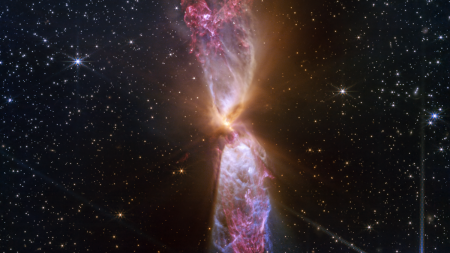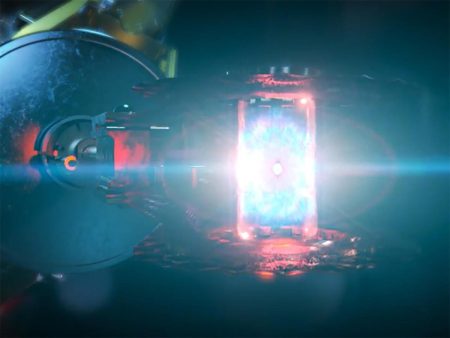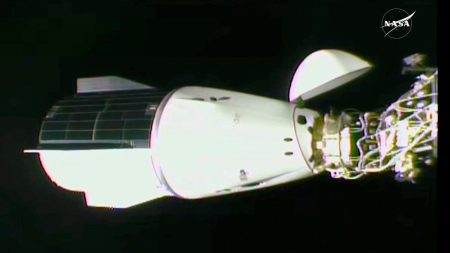Modernizing NOAA’s Space Weather Scales: A Critical Update for the 21st Century
The Importance of Space Weather Scales
Space weather, like terrestrial weather, has the potential to disrupt our daily lives and critical infrastructure. Just as hurricanes and tornadoes are categorized to help us understand their impacts, space weather events—such as geomagnetic storms, solar radiation storms, and radio blackouts—are classified using the Space Weather Scales. These scales, managed by the National Oceanic and Atmospheric Administration (NOAA) and the Space Weather Prediction Center (SWPC), provide a framework to assess the intensity and likelihood of space weather events. However, the existing scales, developed in 1999, are now considered outdated and confusing for both the public and experts.
To address this issue, NOAA and its partners are working on updating the Space Weather Scales to better reflect current scientific understanding and improve communication with stakeholders. This effort is more urgent than ever, as the Sun is at solar maximum, a period when solar activity is at its highest, increasing the likelihood of significant space weather events.
The Challenge of Understanding Space Weather
Space weather is inherently complex, and its impacts can vary widely depending on the event and location. Geomagnetic storms, for example, can disrupt power grids and satellite operations, while solar radiation storms can pose risks to astronauts and electronic systems in space. Radio blackouts, caused by solar flares, can interfere with communication systems.
The current Space Weather Scales were designed to categorize these events on a scale of 1 to 5 (e.g., "minor" to "extreme"). However, terms like "extreme" can be subjective and mean different things to different people, depending on their specific systems and locations. For example, a G5 geomagnetic storm might have vastly different impacts on a power grid in one region compared to another.
This ambiguity has led to calls for a more precise and user-friendly system. As Bill Murtagh, program coordinator for the SWPC, noted, "Space weather is challenging for many people to understand. When you talk about geomagnetic storms, X-rays, and energetic particles, people don’t really get it." The challenge is to find a balance between providing detailed information for experts and making the scales accessible to the general public.
Gathering Feedback for Improvement
In 2024, the SWPC, in collaboration with the National Weather Service and the IDA Science and Technology Policy Institute (STPI), sought feedback from nearly 500 people across almost 200 engagements. These stakeholders included operators of critical infrastructure (e.g., power grids, satellites, and airlines) as well as the general public. The goal was to identify areas for improvement and explore potential revisions to the scales.
The feedback highlighted several key issues, including the need for clearer language and better differentiation between the most extreme events. One recurring suggestion was to add a new category or revise the upper end of the scale to better distinguish between events like the 2003 Halloween solar storm and the 2024 Gannon event, which was unprecedented in its severity.
STPI is now working on a report that will present several options for revising the scales. Over the next year, NOAA will evaluate these options, considering factors like feasibility, timeline, and user impact. The process will also involve ongoing collaboration with the space weather community to ensure that the updated scales meet the needs of all stakeholders.
Phases of the Update Process
The update process has been divided into three phases. Phase two, which is currently underway, involves analyzing the feedback and prioritizing changes. Some changes, such as simplifying descriptions and improving communication, can be implemented in the near term (1-2 years). Others, like overhauling the scale entirely or adding new categories, may require more time and resources.
Murtagh emphasized the importance of addressing "what we can do in the near term that’s really going to help the end users." This approach ensures that immediate improvements can be made without delaying the overall effort.
Phase three, described as the "big one," will focus on implementing the final changes, updating products, and communicating these changes to users. This will involve creating a subscription service to notify stakeholders about upcoming revisions and ensuring a smooth transition.
Key Changes on the Horizon
One of the most significant changes under consideration is the elimination of subjective terms like "minor," "moderate," and "extreme" in favor of more precise language. For instance, the G5 category on the geomagnetic storm scale might be redefined to avoid ambiguity. Additionally, there is a growing call to differentiate between extreme events, such as G5 and G5+, to better capture their varying impacts.
Another proposed change is the adoption of a new scaling system that eliminates "saturation" at the high end of the scale. This would allow for a more nuanced assessment of extreme events, such as the 1859 Carrington Event, which was far more powerful than any storm observed in recent history.
While these changes are critical, they will require significant time and effort to implement.Murtagh acknowledged that "some of these things we want to take a decade to do, but we have to focus on what we can do in the near term."
The Broader Implications of This Update
The revision of the Space Weather Scales is not just a technical exercise; it has far-reaching implications for how society prepares for and responds to space weather events. Modern infrastructure, from power grids to communication systems, is increasingly vulnerable to solar activity. By improving the clarity and effectiveness of the scales, NOAA can help stakeholders take proactive measures to mitigate risks and protect critical systems.
At the same time, this effort reflects a broader shift in how space weather is perceived and communicated. As Murtagh noted, the goal is to create a system that benefits both experts and the general public, ensuring that everyone has the information they need to understand and respond to space weather events.
In conclusion, the update of NOAA’s Space Weather Scales is a crucial step forward in addressing the challenges posed by solar activity. By incorporating feedback from stakeholders and prioritizing clarity and accessibility, NOAA and its partners are working to create a system that is both scientifically robust and user-friendly. The success of this effort will depend on careful planning, collaboration, and a commitment to continuous improvement. As we move deeper into the 21st century, the ability to communicate and prepare for space weather events will only grow in importance.









